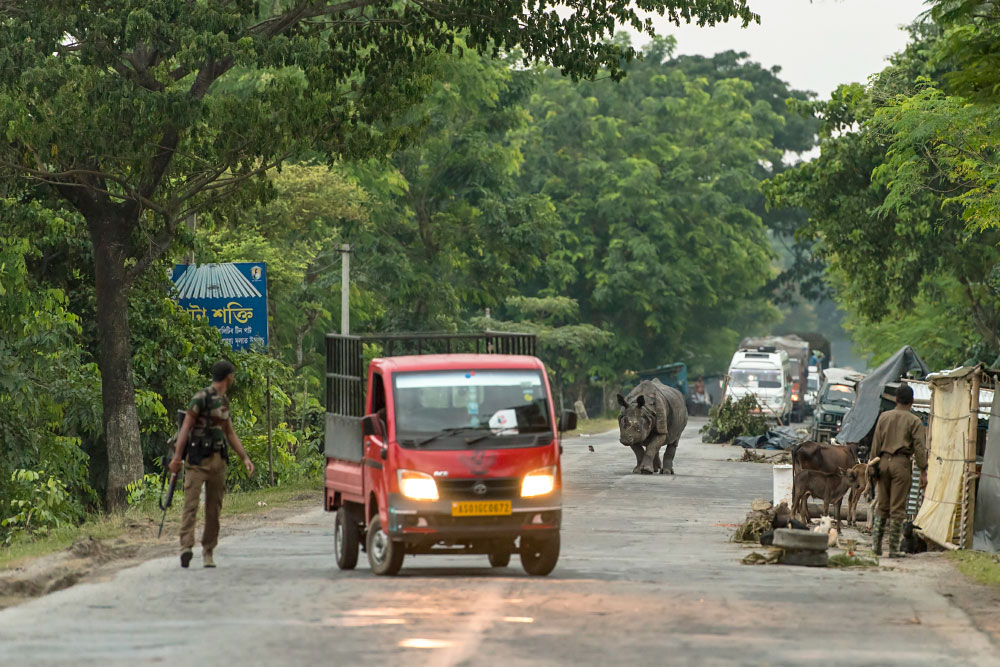 "
"
Floods in the Brahmaputra valley of Assam are an annual occurrence, and have both positive and negative consequences for humans, property and wildlife. Kaziranga National Park is often heavily impacted by such floods, with animals usually fleeing to the adjoining Karbi Anglong hills, south of the Park. While National Highway 37, which lies between the park and the hills, becomes a temporary shelter for flood-affected people at several locations, wild animals too climb on to it to escape the waters and to cross over to the hills. On the morning of 30th July, we started driving towards the Burapahar area at the Western end of Park. Our drive through temporary camps of flood-affected people suddenly came to a halt when we realised that both people and the vehicles ahead of us were turning back towards us. We soon saw why. An adult greater one-horned rhinoceros was marching on the national highway in our direction. I managed to reverse the vehicle and allow the rhino to walk peacefully past us.
This is not an isolated incident. Other wildlife such as elephants, wild pigs and deer, as well as innumerable smaller mammals and other fauna too, can be seen crossing the road. It is therefore vital that the interaction between people and wildlife during such floods, particularly on the national highway, be actively managed. Awareness should also be created to keep vehicle speeds at a minimum, both during the day and night. Fortunately, several NGOs and independent volunteers join hands with the authorities to minimise road kills, as well as to help in flood rescues. I appeal to all nature lovers in Assam to stay alert during the monsoon season and be proactive in offering their assistance to the authorities during floods.

 CI is a non-profit, non-commercial portal that aims to facilitate wildlife and nature conservation by providing reliable information and the tools needed to campaign effectively.
CI is a non-profit, non-commercial portal that aims to facilitate wildlife and nature conservation by providing reliable information and the tools needed to campaign effectively.



Chosen as 'Picture of the Week'
NH 37, which runs between Kaziranga National Park and the Karbi Anglong hills, often witnesses tense interactions between humans and wildlife during the annual floods.